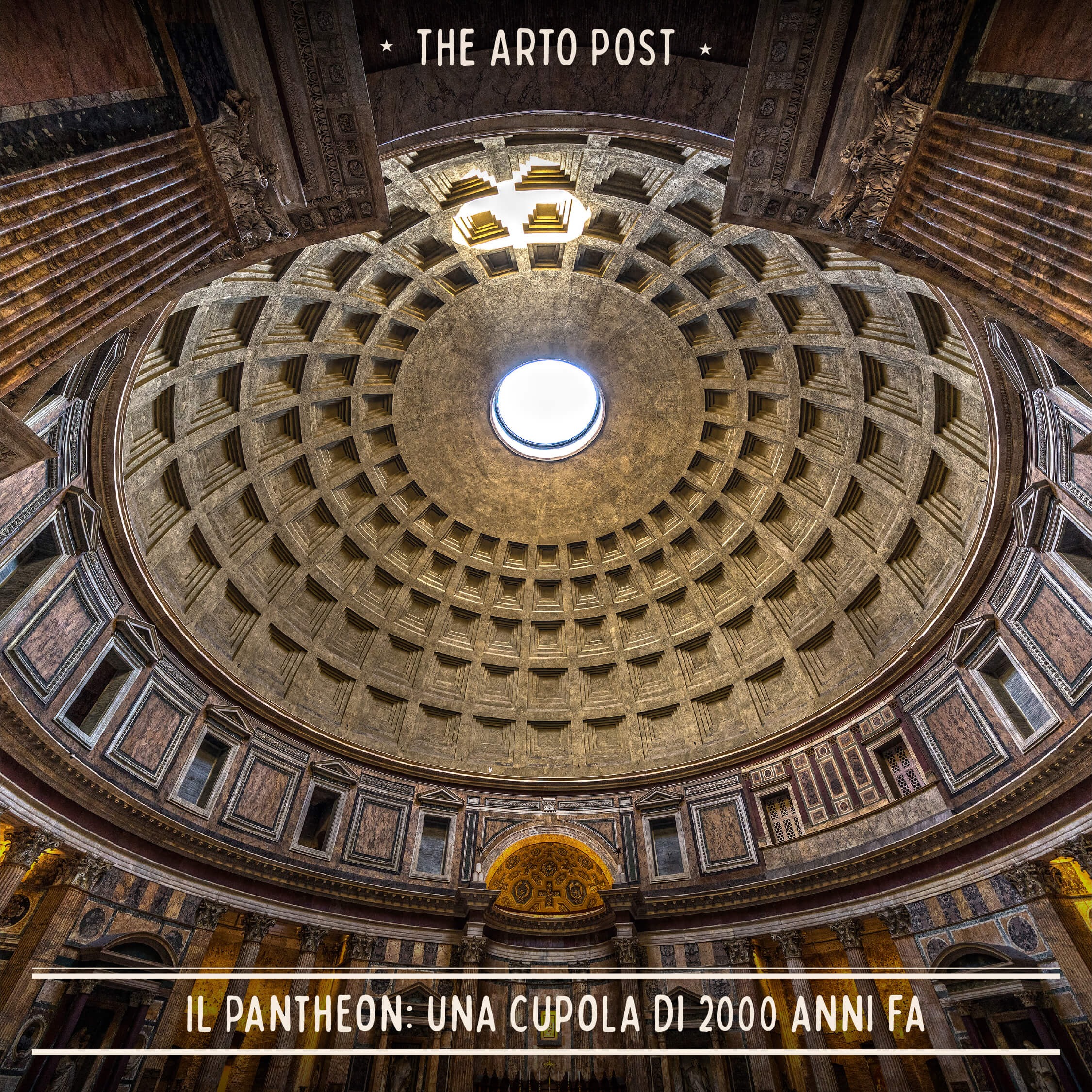The Pantheon

The Pantheon is the largest concrete dome in the world.
It was originally a temple dedicated to all the gods (hence the name Pantheon, which means “of all the gods” in Greek), but it was transformed into the Basilica of Santa Maria ad Martyres in 609.
In the center of the dome there is a large circular opening (9 meters in diameter) called an oculus, which is the only point through which light can enter, as well as rain, creating a beautiful waterfall effect when it does!
The floor is sloped to direct the rain to the appropriate drainage holes.
The engineers who built it respected precise geometric proportions: the height of the dome is 43.30 meters and equal to its diameter, creating a surprising harmony; to lighten the vault, 5 rows of coffers were inserted so that the surrounding walls, 6 meters thick, could support its weight of 4535 tons.
The inscription on the architrave of the facade reads “M. Agrippa L. F. Cos. Tertium fecit” (“Marcus Agrippa Luci filius consul tertium fecit”), which translates as “Marcus Agrippa, son of Lucius, consul for the third time, built it”, reminds us that the first building was commissioned by Marcus Agrippa in 27 BC, during the reign of Emperor Augustus.
Destroyed by fire, it was rebuilt in 124 A.D. by Hadrian, who did not want to change the inscription.
The emperor, who was passionate about art and architecture, left it as a tribute to his predecessor.
The Pantheon was an inspiration to the great artists of the Renaissance, who used it as a model. Raphael admired it so much that he wanted to be buried there.